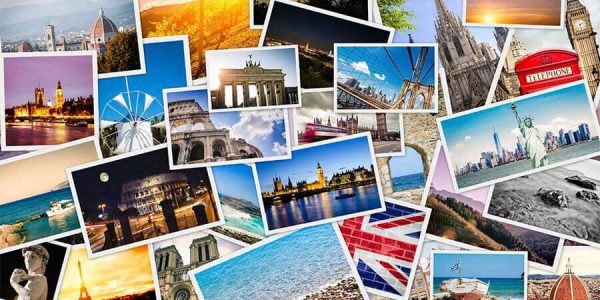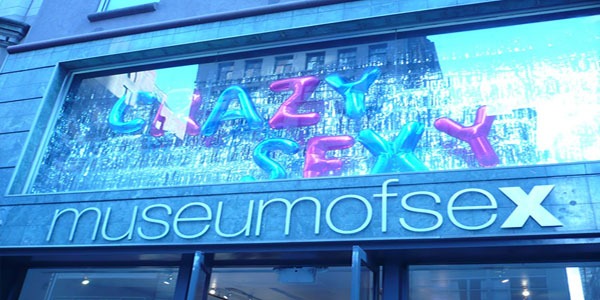Germany has thousands of castles and palaces to offer for your next trip. Most of them have fascinating stories to tell – and many are true gems. No one knows exactly how many castles and palaces there are in Germany. The German Castles Association estimates that there are more than 25,000 such buildings. Many of them can be visited from the inside and are even worthwhile for a short vacation. Traveler Magazine would like to ease the agony of choice a little. In the following, we present 20 highlights that are particularly recommended by travel experts – including all German castles and palaces that are UNESCO World Heritage Sites. So, what are we waiting for, prepare your backpack with many pockets and discover the most beautiful German castles to visit in 2023.
- Map of the German Castles
- List of castles in Germany:
- Hohenzollern Castle, Bisingen
- Löwenburg Castle and Wilhelmshöhe Palace, Kassel
- Neuschwanstein Castle of Ludwig II
- Ludwigsburg Residential Palace
- Augustusburg and Falkenlust Castles, Brühl
- Würzburg Residence
- Heidelberg Castle
- Charlottenburg Palace, Berlin
- Sanssouci Palace, Potsdam
- Cecilienhof Palace, Potsdam
- Satzvey Castle, Mechernich
- Eltz Castle, Wierschem
- Schwerin Castle
- Muskau Castle
- Wartburg Castle, Eisenach
- Glücksburg Castle
- Wörlitz Castle
- Nordkirchen Castle
- Herrenhausen Palace, Hanover
- Albrechtsburg Meissen
List and Map of castles in Germany
List of German Castles
- Ahrensburg Palace
- Altena Castle
- Burghausen Castle
- Colditz Castle
- Eltz Castle
- Heidelberg Palace
- Hohenschwangau Castle
- Hohenzollern Castle
- Schloss Johannisburg
- Königstein Fortress
- Burg Lahneck
- Lichtenstein Castle
- Marienburg Castle
- Marksburg
- Maus Castle
- Moritzburg Castle
- Museum Schloss Moyland
- Münzenberg Castle
- Neuschwanstein Castle
- Nürburg Castle
- Imperial Castle of Nuremberg
- Pfalzgrafenstein Castle
- Rheinstein Castle
- Rochlitz Castle
- Schwerin Castle
- Sigmaringen Castle
- Stolzenfels Castle
- Fortress Marienberg
- Zwingenberg Castle
- Bentheim Castle
- Berwartstein Castle
- Blankenhain Castle
- Albrechtsburg
- Dresden Castle
- Mespelbrunn Castle
- Cochem Castle
- Wartburg Castle
- Wernigerode Castle
- Glücksburg Castle
- Schloss Nordkirchen
Map of German Castles
Keep reading and you are going to find short but yet useful information about 20 of the most beautiful German castles and palaces:
Hohenzollern Castle, Bisingen
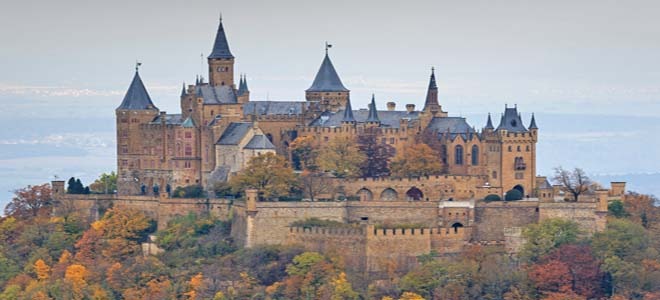
About 60 kilometers from Stuttgart, Hohenzollern Castle sits enthroned 855 meters above sea level on a peak of Mount Hohenzollern. For a long time it was the seat of the Prussian high noble family of the same name, which is why the crown of Kaiser Wilhelm II can be seen in its treasury. The present castle was built only in the 19th century, but the first one on the site was mentioned as early as 1267. With its many towers and pointed roofs, it resembles a castle from a fairy tale. It also attracts visitors with many different events, such as the open-air theater in the summer, when a play by William Shakespeare is traditionally performed once a year in the castle courtyard.
Löwenburg Castle and Wilhelmshöhe Palace, Kassel
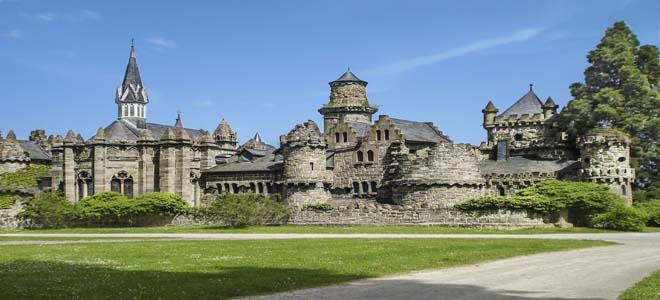
Löwenburg Castle and Wilhelmshöhe Palace are part of Bergpark Wilhelmshöhe in Kassel, which the World Heritage Committee recognized as a Unesco World Heritage Site in 2013. The approximately 560-hectare Baroque complex stretches from Kassel’s famous landmark, the 70-meter-high statue of Hercules, to the 350-meter-long cascades. The Bergpark was created in the 17th century under Landgrave Carl and was expanded in the late 18th century to include wild waterfalls and water features.
As one of the first retrofitted castle ruins in medieval style in Europe, the Löwenburg was built in the Bergpark between 1793 and 1801 – commissioned by Landgrave Wilhelm IX, later Elector Wilhelm I of Hesse-Kassel. Externally, the building resembles a dilapidated knight’s castle, but this is deceptive: inside are several princely residential apartments, an armory and a neo-Gothic castle chapel. Currently, the keep, which was destroyed in World War II, is being repaired, which is why visitors can only visit the armory and the castle chapel until the end of August 2020.
Not far from the Löwenburg – also in the Bergpark – is Wilhelmshöhe Castle with an adjacent ballroom and greenhouse. It was built about 25 years before the Löwenburg. Today, the palace houses the Old Masters Picture Gallery, a collection of antiquities, the graphics collection, as well as the palace museum in the Weissenstein wing and a scientific reference library in the church wing.
Neuschwanstein Castle of Ludwig II
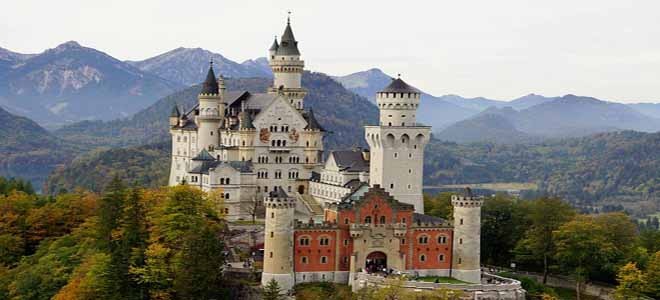
Of course, the most famous German castle must not be missing from this list: Neuschwanstein in Schwangau near Füssen. Every year, around 1.4 million people visit the dream come true of the former “fairytale king” Ludwig II of Bavaria. In his planning for Neuschwanstein from 1867, he sometimes took idealized, monumental knight’s German castles from medieval paintings as models. The finished structure in turn inspired Walt Disney: a very similar castle can be seen in the animated film “Cinderella” and in the logo of the production company.
The swan, the heraldic animal of the Counts of Schwangau, which recurs in the décor, stands for the Christian ideal of purity. At the same time, the animal is reminiscent of the swan knight Lohengrin from the opera of the same name by Richard Wagner, whom Ludwig greatly admired. The highlights of the interior include the Throne Room and the Singers’ Hall. The grotto between the living room and study, an artificially created stalactite cave, is also particularly impressive.
Also worth a visit are Ludwig’s castles of Herrenchiemsee on the island of the same name in Lake Chiemsee and Linderhof in Ettal. While the former is best known for its nearly 100-meter-long Hall of Mirrors, Linderhof Palace is distinguished, among other things, by its artificial Venus Grotto with waterfall and lake.
Ludwigsburg Residential Palace
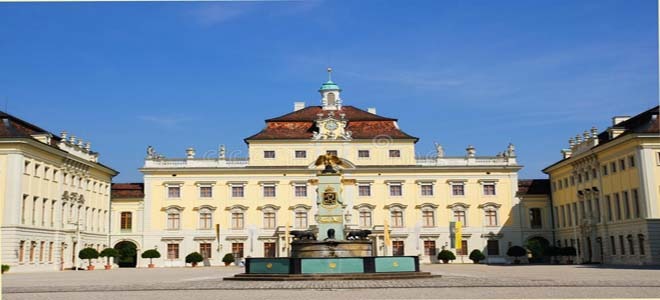
One might think that Duke Eberhard Ludwig von Württemberg was a megalomaniac. Inspired by the world-famous Versailles super palace near Paris, he wanted to build more than just a “simple” palace with a garden near Stuttgart. No, he wanted to build an entire city: Ludwigsburg. Even today, the wide baroque market square and the straight avenues with their chestnut and linden trees characterize the cityscape.
The baroque palace with elements of rococo and classicism is surrounded on three sides by a large park, making it one of the top baroque palaces in Germany. Especially the permanent garden show “Blühendes Barock” and its fairy tale garden are considered a popular destination. Various museums and permanent exhibitions as well as the theater in the palace convey the feeling of life in bygone times. For example, original clothing from the 18th to the 20th century can be admired in the fashion museum.
Read also: The best places to visit in Germany
Augustusburg and Falkenlust Castles, Brühl
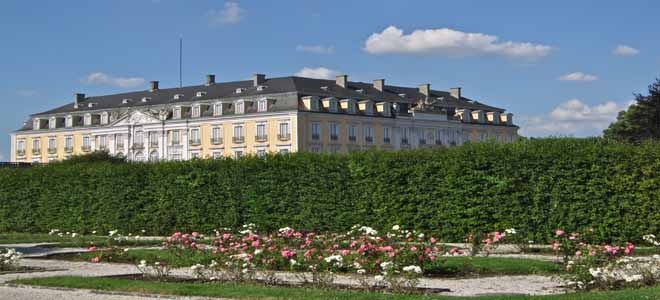
If you book a day trip from Cologne, you can find another World Heritage site near the city: the castles of Augustusburg and Falkenlust in Brühl. Unesco describes the palaces as “the first significant creations of rococo style in Germany.” German, Italian and French architects, painters, sculptors and stucco-workers worked together from 1725 on Augustusburg Palace, whose central wing contains the famous grand staircase by Balthasar Neumann.
When the Cologne Elector and Archbishop Clemens August from the House of Wittelsbach was no longer satisfied with the castle as his favorite summer residence, he had the small hunting lodge Falkenlust built a short walk away between 1729 and 1737. The enthusiastic falcon hunter had chosen the location in order to be able to intercept the herons on their flight to their fishing grounds.
Würzburg Residence
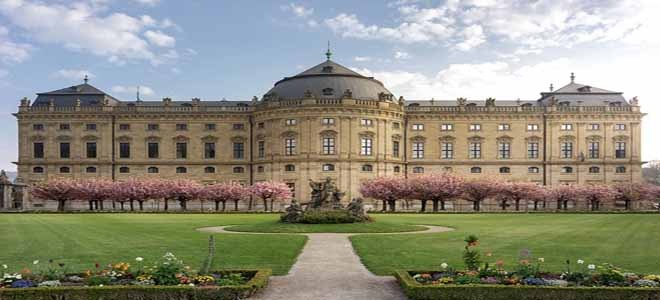
The Würzburg Residence was the third castle in Germany to make it onto the list of Unesco World Heritage Sites back in 1981. According to the German Unesco Commission, it is considered, together with the Court Garden and Residenzplatz, to be the most extraordinary and homogeneous Baroque palace of its kind. The building was constructed between 1720 and 1744 according to plans by architect Balthasar Neumann – and was so famous that Neumann and partial views of the staircase made it onto the 50-mark bill. Neumann was inspired by buildings in cities such as Paris, Vienna and Genoa, which is why he collaborated with many different artists.
Here you can read what to do in Vienna in 2 days.
Particularly well known are the works of the greatest fresco painter of the 18th century, Giovanni Battista Tiepolo, in the staircase and the Imperial Hall (picture). After the residence was almost completely burned out in an air raid in 1945, only the central building was largely spared. After the end of the Second World War, the complex reconstruction began until 1987.
42 of the approximately 340 rooms of the Residenz can be visited today. The year 2020 marks the 300th anniversary of the laying of the foundation stone of the Residenz, which is why various guided tours, expert talks and program events for families are planned for the week of May 18-24.
Heidelberg Castle
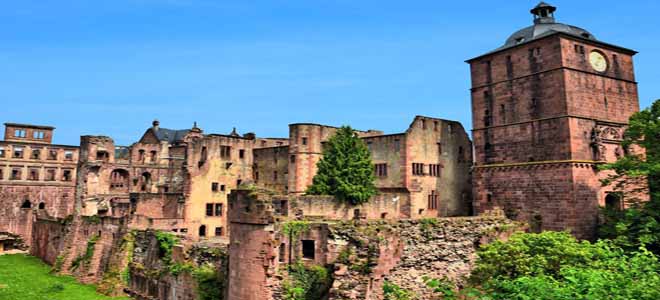
Heidelberg Castle on the northern slope of the Königstuhl is one of the most famous castle ruins in the world. As early as the 13th century, the counts palatine of the time built a medieval castle here, which they steadily expanded for about 300 years. However, the castle gradually fell into disrepair. Only the Friedrichsbau was restored in 1893 in the neo-Renaissance style. The rest remained as ruins. The reason: Repeatedly, scientists discussed whether the ruins should be conserved or restored (“castle controversy”).
Finally, the opinion prevailed to reject further reconstruction plans. Numerous legends and myths have grown up around the ruins, which are also discussed in detail during the castle tours. For example, a glass of water is said to have killed the wine-loving court jester Perkeo under Elector Carl Philipp von der Pfalz. Even today, a wooden figure of Perkeo guards the Great Wine Barrel in the barrel cellar.
Charlottenburg Palace, Berlin
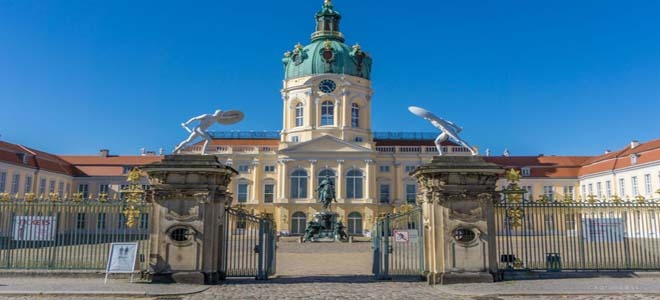
Charlottenburg Palace, in the Berlin district of the same name, is considered one of the best castles in Germany and a showpiece of Prussian rococo. Built in the 17th century as a summer palace still at the gates of the capital, it has been expanded and rebuilt over the centuries. With the building part Old Palace and the New Wing, Charlottenburg Palace is the largest and most important palace complex of the former Electors of Brandenburg, Prussian kings and German emperors, of a total of seven generations of Hohenzollerns.
Today, the palace and gardens reflect the ever-changing tastes of its many occupants from the Baroque period to the early 20th century. The palace offers an introduction to the Hohenzollern dynasty as well as rooms and halls furnished true to the original and art collections. The porcelain cabinet, the palace chapel and Frederick I’s bedroom are among the highlights in the Old Palace.
Check what else to see in Berlin.
Sanssouci Palace, Potsdam
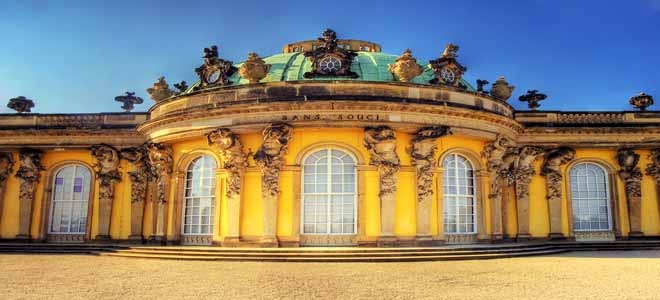
The former summer residence of Prussian King Frederick II in Potsdam was built around 1745 according to his own sketches in the rococo style. The French word “Sanssouci” means “no care” and is to be understood as a kind of leitmotif of the king. For this is where he preferred to retreat with his dogs. The vineyard terraces and the 290-hectare park enchanted the king so much that he wanted to be buried in a tomb on the top terrace.
However, his wish was not to be fulfilled until 1991 – after the coffin had been moved several times due to the Second World War and the division of Germany, including to the Hohenzollern ancestral castle in southern Germany.
In the 19th century, the French pleasure garden of Sanssouci was interwoven with a landscape park typical of the time. Gradually, magnificent buildings of the Classicist and Romantic periods found their place in this park. Among them is the New Palace, which is even larger than Sanssouci Palace. Since 1990, the entire ensemble, like all the palaces and associated parks of Potsdam and Berlin, has been on Unesco’s World Heritage List of German castles.
Cecilienhof Palace, Potsdam

Cecilienhof Palace, also a Unesco World Heritage Site in Postdam, is the last palace building of the Prussian Hohenzollern dynasty. Emperor Wilhelm II had the residence built for his eldest son between 1913 and 1917. Until 1945 it was the residence of the last German Crown Prince and Crown Princess Wilhelm and Cecilie of Prussia. In contrast to Sanssouci Palace, the building appears rather plain.
This is because materials such as brick and wood were used to adapt its appearance to the landscape. The building comprises a total of 176 rooms, with the large residential hall at its center. The castle also has more to offer in terms of history than one might first think: from July 17 to August 2, 1945, the summit meeting of the victorious powers of World War II took place here. From May 2020, there will be a special exhibition on this topic.
Read also: Most curious facts about Belgium
Satzvey Castle, Mechernich
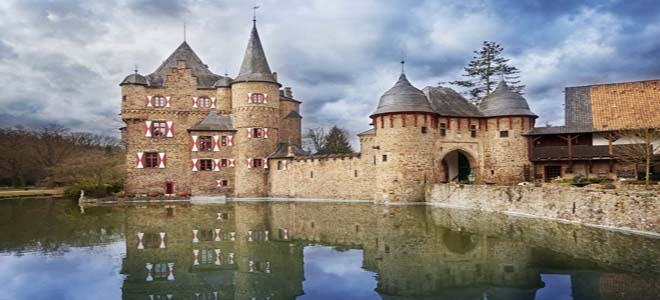
Anyone who has ever wanted to spend a night in a castle can fulfill this wish at Wasserburg Satzvey on the edge of the Eifel. Instead of a hotel, guests can stay there in estate suites and castle apartments. The castle was first mentioned in 1368. It has been in the family for more than 300 years and is still considered the home and ancestral seat of the family of the Counts Beissel von Gymnich.
There is also no shortage of events at the castle, such as spooky dinners, theater performances, medieval markets and knights’ games. Visitors can then watch the medieval market hustle and bustle with a good 70 merchants from various guilds, storytellers, minstrels and jugglers at the knights’ games.
Eltz Castle, Wierschem
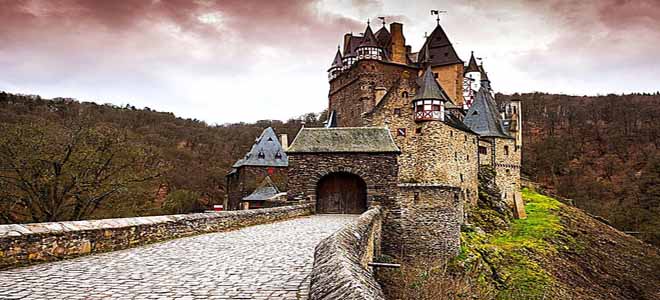
Eltz Castle is located about 30 kilometers from Koblenz in the Eifel. And it is – like most castles – on a rock, but still idyllically nestled in a wooded valley, surrounded by a beautiful nature reserve and hiking area. With its residential towers, oriels, roofs, half-timbering and spires up to 35 meters high, it is a prime example among German castles.
Between 1961 and 1995, for example, it adorned the 500-Mark bill. Since its foundation in the 12th century, Burg Eltz has survived all wars undamaged and has always remained in the possession of the noble family that gave it its name. That is why the original furnishings from eight centuries have been preserved to this day.
A special highlight inside is the armory and treasury, one of the most important of its kind. It contains gold and silversmith’s work, porcelain, jewelry, glass and weapons from 850 years of family ownership. There is also much to explore in the Knights’ Hall, such as the heavy ceiling, the original coat of arms frieze and important knight’s armor.
Schwerin Castle

Like a fairy-tale castle, the palace sits enthroned on an island in Lake Schwerin – only seemingly dreamy. For inside, politics is once again being played out as it once was. The parliament of the state of Mecklenburg-Vorpommern has been working there since 1990, and it is possible to visit it in groups or, for example, on an open day. Visitors can also experience the atmosphere of actual and staged history typical of the 19th century in the rooms of the grand ducal apartments.
The real history goes far back, to the Slavic Middle Ages of the 10th century, when the Obotrites, who ruled at that time, built a fortified castle on the same site. Grand Duke Friedrich Franz II had Schwerin Castle rebuilt starting in 1837. Experts describe today’s building as the culmination of Romantic historicism, which had no equal in Bavaria until the construction of Neuschwanstein Castle. The exterior and interior of Schwerin Castle are largely preserved in their original state. The palace garden, orangery and grotto invite visitors to take a stroll.
Discover the best European capitals to visit in 2023
Muskau Castle
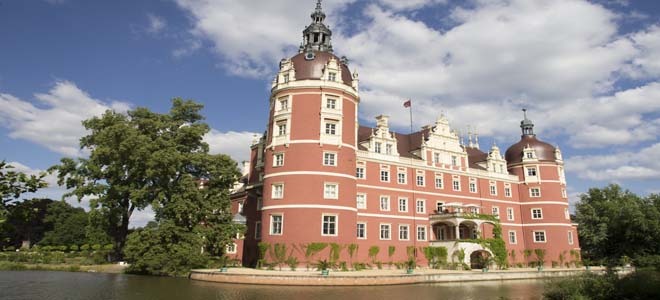
Just before the German-Polish border, in the valley of the Lusatian Neisse, lies Muskauer Park, a Unesco World Heritage Site since 2004. After the Second World War, the German-Polish border ran right through the park, so that the eastern, Polish part was left to grow uncontrolled for years. It was not until 1988, when German and Polish preservationists worked together, that Muskauer Park was restored as a complete work of art.
The name of its creator is familiar to many from another context: Prince Hermann von Pückler-Muskau is said to have invented the ice cream dessert “Fürst-Pückler-Torte.” Between 1815 and 1844, he had laid out the park on his estate with the New Castle. The name may be somewhat misleading. After all, the New Palace is not meant to replace the Old Palace, which was originally a gatehouse.
In the process, the “green prince” designed the park in an unusually modern and artistic manner for his time, which influenced the profession of landscape architect. Today, the permanent exhibition “Pückler! Pückler? Simply Unbelievable!” in the New Muskau Palace at the southwestern end of the park conveys the prince’s work to visitors. In addition, changing exhibitions take place in the west wing. From the southwest tower, visitors can look down on the park from a height of 35 meters.
Wartburg Castle, Eisenach
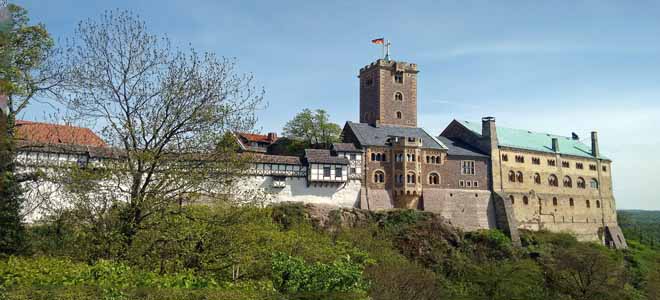
This Thuringian castle was the first German to make it onto Unesco’s World Heritage list of castles in Germany. The justification: it is “an outstanding monument to the feudal era in Central Europe.” According to legend, it was founded in 1067. Wartburg Castle became one of the best castles in Germany, on the one hand, because of its most famous exile: Martin Luther translated part of the New Testament from Latin into German here in 1521/22.
On the other hand, the Wartburg was used as the site of the legendary singer’s war in Richard Wagner’s opera “Tannhäuser”. It was also the residence and place of work of St. Elisabeth of Thuringia, who is known for her charity. Today, the palace, the famous Lutherstube, the show library and a museum can be visited.
Read also: 25 must-see Luxembourg attractions
Glücksburg Castle
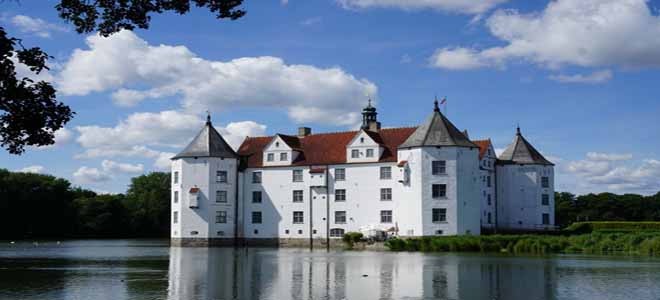
Glücksburg Castle in Schleswig-Holstein was for a long time one of the most important castle complexes in Northern Europe. This is because it was repeatedly the seat of the Danish royal family, for example when it came into the possession of the then Danish King Christian III in 1544. The Glücksburg family, which gave the castle its name, is considered to be Europe’s matrimonial family. Indeed, since Christian IX’s accession to the throne in 1863, all Danish kings and queens have been at least distantly descended from the Duchy of Schleswig-Holstein-Sonderburg-Glücksburg.
The building got its name from the motto of Duke Johann the Younger of Schleswig-Holstein-Sonderburg: “God grant happiness with peace.” The duke had the castle built between 1545 and 1622 with the bricks from a former monastery on the same site, probably following French models. The castle can also be explored from the inside. One of the special attractions is the important collection of tapestries and leather wallpapers.
Wörlitz Castle
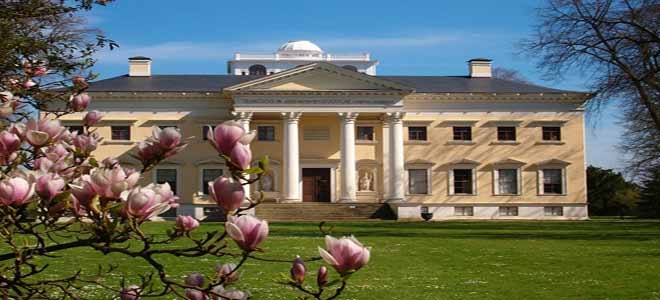
The Garden Kingdom of Dessau-Wörlitz, which includes Wörlitz Castle, extends over 142 square kilometers between the Bauhaus city of Dessau and the Luther city of Wittenberg. As the first landscape garden on the English model on the European mainland, Unesco declared the Garden Kingdom a World Heritage Site. Leopold III Friedrich Franz, Prince and Duke of Anhalt-Dessau, had great plans for his small principality. He wanted to combine the useful with the beautiful. In the mid-18th century, he was not only concerned with landscape design.
Instead, he also wanted to use the Garden Kingdom to show how philosophical principles and political goals could be implemented: For example, there was no fence separating the garden from the city, and everyone had free access and was allowed to visit the palace. The palace is considered the founding building of German classicism. Today, among other things, antique sculptures, paintings and vessels of the famous Wedgewood manufactory can be seen in the castle.
Nordkirchen Castle
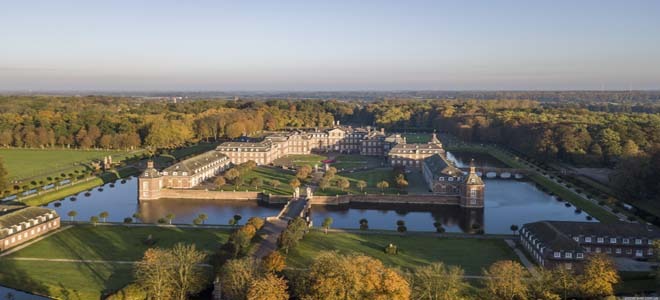
Nordkirchen Castle, with its extensive buildings, gardens and parks in the southern Münsterland region, is known as the Westphalian Versailles. Prince-Bishop Christian von Plettenberg had today’s baroque moated castle built according to the plans of court architect Gottfried Laurenz Pictorius starting in 1703.
Today, the castle is owned by the state of North Rhine-Westphalia, which operates the state finance school there, among other things. It is also known for its cultural offerings through castle concerts and music camps. Both the park and the castle can be visited on a guided tour. The magnificent Jupiter Hall with its elaborate ceiling paintings and the High Baroque castle chapel with its precious stuccowork, ceiling work and wood carvings are considered special sights.
Herrenhausen Palace, Hanover
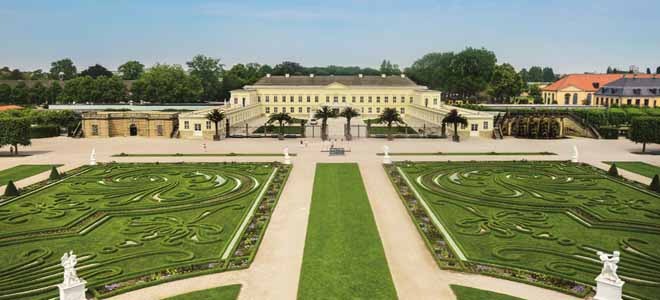
Herrenhausen Palace in Hanover did not always look as imposing as it does today: The palace and garden date back to a farmstead built in 1638. Once built in the Baroque style, the then court architect of the Kingdom of Hanover, Georg Ludwig Friedrich Laves, redesigned it in the Classicist architectural style around 1819. During the Second World War, the palace was bombed and almost completely destroyed.
Today, it largely serves as an event and conference center after the Volkswagen Foundation had the complex rebuilt. Visitors can tour the eastern foyer, the wings with the museum rooms, as well as the garden courtyard with the palace staircase and parts of the roof that are open to the public. The museum displays baroque treasures and famous personalities from Hanover’s history.
Albrechtsburg Meissen
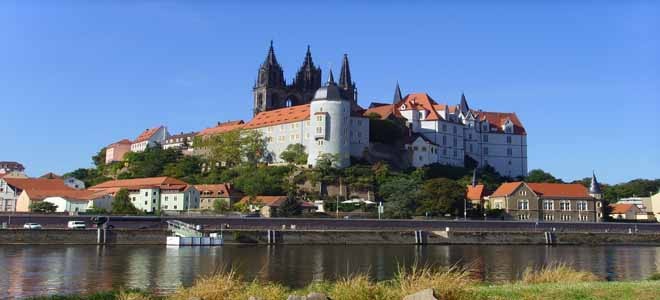
The white castle directly on the Elbe River can look back on a long history. As early as 929, the king of the East Franconian Empire, Henry I, built a wooden structure on the rock to defend himself in an emergency. He thus made Meissen the center of the border margraviate of the same name vis-à-vis the still Slavic territories in the east.
From then on, the margrave ruled over the entire Mark Meißen and resided in the predecessor building of Albrechtsburg Castle, which therefore went down in history as the “cradle of Saxony”. It was not until between 1471 and 1524 that the castle was built as we know it today. At that time, the ruling brothers Ernst and Albrecht von Wettin wanted the new residence to be converted into a representative administrative center and residential palace.
However, it was not until Augustus the Strong in 1710 that Albrechtsburg Castle was really put to active use – as Europe’s first porcelain manufactory. The white gold was produced at the castle for a total of 153 years. The second floor of the castle is intended to show how much effort was required in the former porcelain production.



